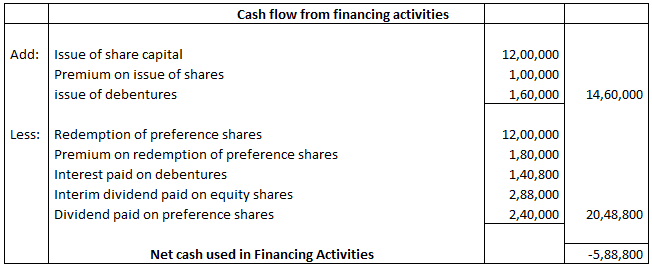
For example, the DJIA is price-weighted, while the S&P 500 is market-capitalization-weighted. They also use significantly different criteria to include companies in their listings. There is only a broad guide that requires large, respected, and substantial firms with high stock prices.
The DJIA is widely followed because it is considered one of the most reliable proxies for the broader market’s performance. It is also closely watched by investors, strategists, commentators and others because of its age and because of the prominence of its component stocks. The Dow’s approach is unlike other leading indexes used to track the overall performance of the stock market, like the S&P 500 or the Nasdaq Composite. These consider a company’s market capitalization when determining how much influence it will have in an index. These stocks are from large companies with long histories of strong performance. Because of the prominence of the companies in the Dow and the age of the index itself, experts and financial commentators often use its performance as a proxy for the overall U.S. stock market.
Dow Is Also Mentioned In
The result of the calculation is the Dow Jones Industrial Average (DJIA) “close” for that day. For example, on Dec. 11, 2020, the Dow closed at 30,046.37, up 47.11 ($47.11) from the previous day, or +0.16%. The Dow Divisor is manually adjusted by The Wall Street Journal (owned by Dow Jones) to account for share buybacks, splits, payment of dividends, and other changes to Dow index companies’ stocks. As an index, the DJIA is one of the oldest and most widely recognized among the 3 million stock market indexes in the world.

They range from the overall U.S. stock market to global bonds and the gold market. Suppose that stock B takes a corporate action that changes the stock’s price without changing the company valuation. https://1investing.in/ Say it is trading at $90, and the company undertakes a 3-for-1 stock split, tripling the number of available shares and reducing the price by a factor of three, i.e., from $90 to $30.
Assume that stock A is trading at $20 per share and stock B is trading at $80 per share on day 1. The Dow Jones Industrial Average, or the Dow for short, is one way of measuring the stock market’s overall direction. When the Dow goes up, it is considered bullish, and most stocks usually do well. When the Dow falls, it is bearish, and most stocks typically lose money. Dow Jones & Company owned the DJIA as well as many other indexes that represent different sectors of the economy.
Assessing the Dow Jones Methodology
Also, some investors fault the Dow as a gauge of U.S. economic conditions because many of its component companies derive a significant amount of their revenue outside the country. Dow component companies are thought to have a significant impact on the economy. Therefore, the Dow index is one of the popular tools investors use to assess U.S. economic conditions. In contrast, the economy is thought to be doing badly when the Dow is losing points. The reversal of a downward primary trend occurs when the market no longer falls to lower lows and highs.
S&P, Nasdaq close higher, snap 3-week losing streak as Wall Street shakes off rate hike fears: Live updates – CNBC
S&P, Nasdaq close higher, snap 3-week losing streak as Wall Street shakes off rate hike fears: Live updates.
Posted: Tue, 29 Aug 2023 07:00:00 GMT [source]
To get into the Dow 30 and stay there, companies must be a prominent backbone of the U.S. economy. The Dow eventually expanded to 20 stocks in 1916 and then 30 stocks in 1928. Back in the late 19th century, the economy and the Dow’s constituents were very much commodity-focused.
Markets
Thomas’ experience gives him expertise in a variety of areas including investments, retirement, insurance, and financial planning. DJSI is an analysis of corporate economic, environmental, and social performance that involves assessing corporate governance, risk management, branding, climate change mitigation, supply chain standards, and labor practices. It is easy to confuse Dow Jones with the Dow Jones Industrial Average (DJIA). Often referred to as “the Dow,” the DJIA is one of the most-watched stock indexes in the world, containing companies such as Apple, Boeing, Microsoft, and Coca-Cola. Dow Jones was not a single person, but two of the three people who founded Dow Jones & Company in 1882.
In its early years, the index was made up of many of the heavy industry stocks that helped to build America. And that name has stuck, even though the U.S. economy and the index’s constituents have since changed significantly. An $80 stock would fall to $40, but there would be twice as many shares outstanding.
- Thomas’ experience gives him expertise in a variety of areas including investments, retirement, insurance, and financial planning.
- This is a sudden dip in index value from the previous 57.5 to 41.67, just because a new constituent is getting added to it.
- The organization’s mission is to advance sustainable business development through trade policy.
- The Dow Jones, on the other hand, is made up of 30 of the largest companies in the country.
- Amgen (AMGN) shares declined by 1.2% and Merck & Co. (MRK) dropped by 1.1%.
- For example, a $100 increase in the aggregate price of Dow stocks may result in the index adding 300 points.
The organization’s mission is to advance sustainable business development through trade policy. Indexing the social and environmental sustainability of a company is an instrument for judging its effectiveness. By taking these aspects into account as they grow their business, it improves their credit score.
Realtime Prices for Dow Jones Stocks
During an uptrend, a reversal occurs when the index consecutively fails to reach higher highs and higher lows over a long period. Instead, the index moves in a series of lower highs followed by lower lows. Aspects of the theory have lost ground—for example, its emphasis on the transportation sector and railroads—but Dow’s approach forms the core of modern technical analysis.
- Its publications included MarketWatch, Barron’s, and, of course, The Wall Street Journal.
- Although investors can’t invest directly in the index, they can park their money in a mutual fund or ETF that tracks the performance of the Dow Jones.
- In more strict readings of this theory, even future events are discounted in the form of risk.
- Helping & empowering business owners for over 15 years, helping them to understand how to protect own interests, build bridges to amplify joint ventures, adapting new business practices and solutions.
- The stock debuted on the Nasdaq in August and within weeks surged fourfold to a high of $93 on Aug. 28 as speculative buyers snapped up the few stocks available to trade.
The Dow is not calculated using a weighted arithmetic average and does not represent its component companies’ market cap unlike the S&P 500. Rather, it reflects the sum of the price of one share of stock for all the components, divided by the divisor. Thus, a one-point move in any of the component stocks will move the index by an identical number of points. So a higher percentage move in a higher-priced component will have a greater impact on the final calculated value.
What is the difference between the S&P 500 and Dow 30?
This website is using a security service to protect itself from online attacks. There are several actions that could trigger this block including submitting a certain word or phrase, a SQL command or malformed data. A more cost-effective way to invest in the DJIA is through an index fund that holds all 30 Dow stocks, mirroring the actual index.
The Dow 30 was created by journalist Charles Dow, the man behind the Wall Street Journal, and his business partner Edward Jones in 1896. It was launched as a spin-off of the Dow Jones Transportation Average and is the second oldest stock market index in the U.S. Generally speaking, the companies that appear in this index are blue chip stocks with big customer bases, steady revenues and profits, and excess cash. Unlike both the S&P 500 and the Dow, the Nasdaq 100 contains some foreign companies and is heavily skewed to tech companies. For these reasons, the Nasdaq 100 may reveal less about the overall U.S. stock market and tell you more about the economic performance of the global tech industry. Stocks must meet certain requirements to be included, such as maintaining a minimum daily trading volume of 100,000 shares and having been traded on the Nasdaq for at least two years.

At the Dow’s inception, Charles Dow calculated the average by adding the prices of the 12 Dow component stocks and dividing by 12. Over time, there were additions and subtractions to the index that had to be accounted for, such as mergers and stock splits. The index is maintained by S&P Dow Jones Indices, an entity majority-owned by S&P Global. The ten components with the largest dividend yields are commonly referred to as the Dogs of the Dow.
When Dow died in 1902, Clarence Barron and Jessie Waldron bought the company, and control eventually passed to the Bancroft family.
This indicates that price-weighted indices (like Dow Jones and Nikkei 225) depend on the absolute values of prices rather than relative percentage changes. This has also been one of the criticizing factors of price-weighted indexes, as they don’t take into account the industry size or market capitalization value of the constituents. A component of the Dow may be dropped when a company becomes less relevant to current trends of the economy, to what is trendline in excel be replaced by a new name that better reflects the shift. For instance, a company may be removed from the index when its market capitalization drops because of financial distress. Charles Dow also believed it was possible to predict stock market movements based on the price movements of different types of stocks. According to Dow Theory, an upward trend in industrial stocks should be confirmed by a similar move up in transportation stocks.
Cocoa futures traded at $3,725, their highest level since the late 1970s and a 43% increase from the start of the year. As an asset, cocoa’s year-to-date return competes with household name growth stocks, including Apple (AAPL; +35%), Microsoft (MSFT; +40%); and Alphabet (GOOGL; +53%). American cut its current quarter earnings per share (EPS) outlook to between $0.20 and $0.30, down from its previous estimate of $0.85 to $0.95. The carrier indicated that fuel prices “have increased considerably” since its initial guidance in July. In addition, American said the new labor deal made with its pilots will reduce operating margin by about 1.7 percentage points and EPS by $0.23. Since the Dow Jones index only present 30 companies, some investors think that it falls short as a complete economic barometer.
Transparency is how we protect the integrity of our work and keep empowering investors to achieve their goals and dreams. And we have unwavering standards for how we keep that integrity intact, from our research and data to our policies on content and your personal data. TeamViewer said it will reduce the scope of its sponsorship agreement with Manchester United from the start of the next season, which the company expects will lead to substantial marketing-expense savings. Longboat Energy is expanding its business in South-East Asia by increasing its working interest in a gas block offshore Sarawak in Malaysia through an acquisition of privately-held Topaz Number One, it said Wednesday. Marlowe said it started fiscal 2024 well and was performing in line with expectations as it continued delivering strong strategic progress with high single digit organic revenue growth.

